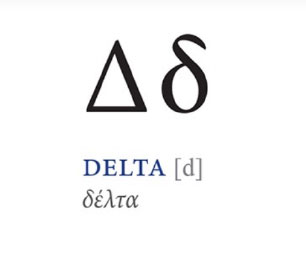Being a Dentist Can Be Dangerous – Diseases – Part 6 – Covid 19 Changes
2021
Covid taught us a lot about the Greek alphabet.

The virus mutates to survive.
Each variant had its own characteristic and country of origin. Oh, let’s not stop there. They all have sub variants.
The landscape was changing constantly. You see all variants can also co-exist in the environment too. Not good!
At first the virus mainly affected elderly people.
Alpha (B.1.1.7)
Alpha first appeared in Great Britain in November 2020 and infections surged around the world. It soon spread around the world and became the dominant variant.
Some mutations in Alpha’s spike protein were thought to make it 30 to 50% more contagious than the original SARS-CoV-2 strain. Alpha comprised 66% of cases,
B.1.1.7 lineage was more likely to see infected people in the hospital, and was deadlier than the original virus.

Then younger people were affected.
Beta (B.1.351)
This variant was identified in South Africa at the end of 2020 and spread to other countries. Experts had been concerned about its several mutations and its potential to evade antibodies.
Beta was about 50% more contagious than the original coronavirus strain. Also, this variant was more likely to lead to hospitalization and death.
Then children were no longer spared from Covid.
Delta (B.1.617.2)

Alpha faded away with the rise of the more aggressive Delta variant.
This variant first identified in India in late 2020; where many children in impoverished areas began dying in the streets while they walking! it soon spread throughout the world, becoming what was the predominant version of the coronavirus.
It’s estimated that Delta caused more than twice as many infections as previous variants. In June 2021, after a steady decline in COVID-19 cases and hospitalizations, the arrival of Delta coincided with a rapid reversal of that trend.
In England had double the hospitalization risk with Delta than they did with Alpha, the previously dominant variant in that country.
Delta also has a high incidence of “long Covid”. A broad term to describe many long terms affects of the virus, such as impaired brain function and chronic fatigue.
Delta was the dominant variant until Omicron took its place in mid-December of 2021.
Omicron (BA.1)

While the original Omicron strain (BA.1) is no longer circulating, Omicron subvariants are now driving most SARS-CoV-2 infections. Omicron was first identified in Botswana and South Africa in late November 2021, and cases quickly began to surface and multiply in other countries.
By December of that year, Omicron was causing daily case numbers in the U.S. to skyrocket to over a million. In 2022, it had spawned a number of subvariants.
Omicron’s subvariants are considered to be especially efficient spreaders of the disease. The original strain of Omicron was more transmissible than Delta was. Clever virus- more than 30 of Omicron’s mutations are on the virus’s spike protein, the part that attaches to human cells, and several of those are believed to increase the probability of infection.
We have gone beyond the Greek letters, now we have nicknames.
A new Omicron strain called EG.5 (nicknamed “Eris”) is the dominant strain in the U.S., and experts are monitoring another new strain called BA.2.86 (nicknamed “Pirola”).
Need an Appointment?
If you’d like to book an appointment with the dentist at Seymour Dental then call us in Dulwich Hill, Sydney on (02) 9564 2397 or
contact us
Next week
Being a Dentist Can Be Dangerous – Diseases - Part 7 - Covid 19 Human Response